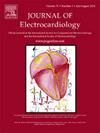Can artificial intelligence lower the global sudden cardiac death rate? A narrative review
IF 1.3
4区 医学
Q3 CARDIAC & CARDIOVASCULAR SYSTEMS
引用次数: 0
Abstract
Purpose of review
WHO defines SCD as sudden unexpected death either within 1 h of symptom onset (witnessed) or within 24 h of having been observed alive and symptom-free (unwitnessed). Sudden cardiac arrest is a major cause of mortality worldwide, with survival to hospital discharge for hospital cardiac arrest and in-hospital cardiac arrest being only 9.3 % and 21.2 %, respectively, despite treatment highlighting the importance of effectively predicting and preventing cardiac arrest. This literature review aims to explore the role and application of AI (Artificial Intelligence) in predicting and preventing sudden cardiac arrest.
Material and methods
Eligible studies were searched from PubMed and Web of Science. The inclusion criteria were fulfilled if sudden cardiac death prediction and prevention, artificial intelligence, machine learning, and deep learning were included.
Conclusions
Artificial intelligence, machine learning, and deep learning have shown remarkable prospects in SCA risk stratification, which can improve the survival rate from SCA. Nonetheless, they have not been adequately trained and tested, necessitating further studies with explainable techniques, larger sample sizes, external validation, more diverse patient samples, multimodal tools, ethics, and bias mitigation to unlock their full potential.
人工智能能否降低全球心脏性猝死率?叙述性评论
回顾目的:世卫组织将SCD定义为在症状出现后1小时内(目击)或在观察到存活且无症状后24小时内(未目击)突然意外死亡。心脏骤停是世界范围内死亡的主要原因,尽管治疗强调了有效预测和预防心脏骤停的重要性,但医院心脏骤停和医院内心脏骤停的存活率分别仅为9.3%和21.2%。本文综述了人工智能(AI)在预测和预防心脏骤停中的作用和应用。材料和方法:从PubMed和Web of Science检索符合条件的研究。如果纳入心源性猝死预测与预防、人工智能、机器学习和深度学习,则符合纳入标准。结论:人工智能、机器学习和深度学习在SCA风险分层中具有显著的应用前景,可提高SCA的生存率。尽管如此,它们尚未得到充分的培训和测试,因此需要进一步研究可解释的技术、更大的样本量、外部验证、更多样化的患者样本、多模式工具、伦理和偏见缓解,以释放其全部潜力。
本文章由计算机程序翻译,如有差异,请以英文原文为准。
求助全文
约1分钟内获得全文
求助全文
来源期刊

Journal of electrocardiology
医学-心血管系统
CiteScore
2.70
自引率
7.70%
发文量
152
审稿时长
38 days
期刊介绍:
The Journal of Electrocardiology is devoted exclusively to clinical and experimental studies of the electrical activities of the heart. It seeks to contribute significantly to the accuracy of diagnosis and prognosis and the effective treatment, prevention, or delay of heart disease. Editorial contents include electrocardiography, vectorcardiography, arrhythmias, membrane action potential, cardiac pacing, monitoring defibrillation, instrumentation, drug effects, and computer applications.
 求助内容:
求助内容: 应助结果提醒方式:
应助结果提醒方式:


